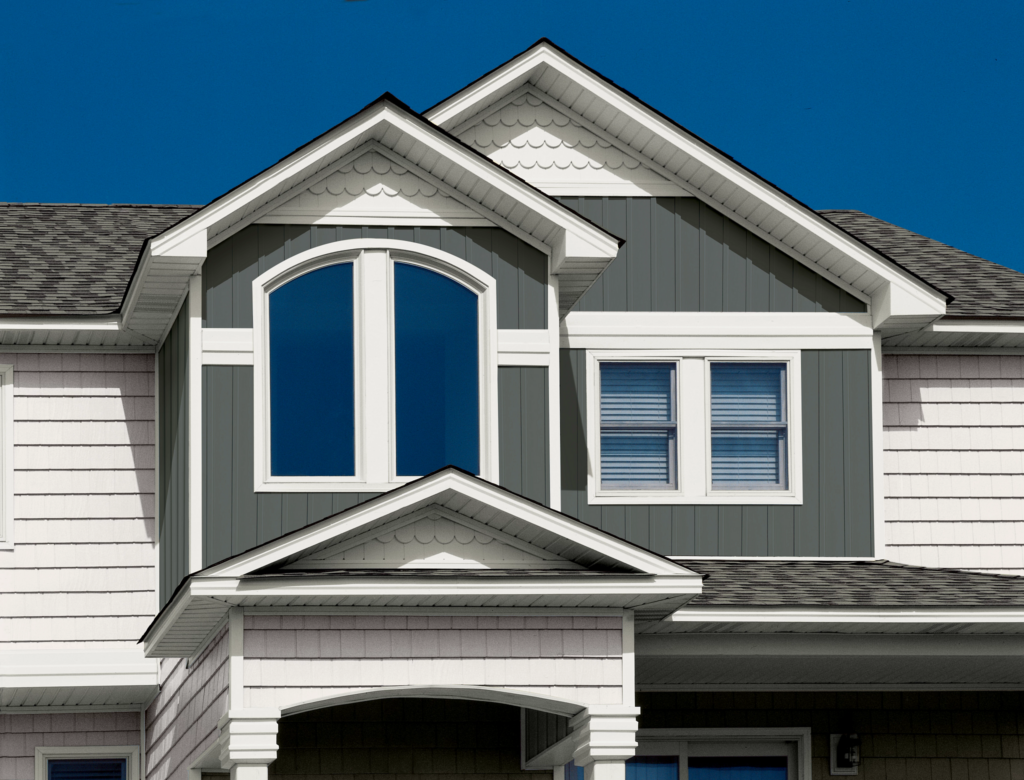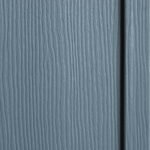
In the world of exterior design, few elements boast the enduring charm and timelessness of board and batten siding. From rustic farm buildings to sleek modern homes, this classic siding style has transcended generations, captivating homeowners and architects alike with its simple yet striking aesthetic.
Batten board’s popularity endures not only for its visual charm, but also for its practicality and durability. This guide will explore the siding’s rich history, versatile applications, and the multiple benefits it offers for both form and function.
What is Board and Batten Siding?
 |
Board and batten siding is a vertical siding style that originated in Sweden and Norway during the colonial period. It became popular in North America in the mid-19th century, especially in the eastern United States, and was often used for outbuildings such as barns and sheds, earning it the nickname “barn siding.” Some regions of the country still refer to it by that name. |
Essentially, the battens, or the thinner strips, closed the gaps between the wider planks of wood, creating a more air-tight structure that provided better insulation benefits. Over decades, the traditional wood planks and strips were replaced by vinyl, proving to be more water and termite proof.
Board and batten exteriors have evolved from an inexpensive and efficient structural design option into a charming and high-end aesthetic.
Benefits of Board and Batten Siding
The benefits of outfitting a home or other building with board and batten include low maintenance costs, durability, energy efficiency, versatility, and longevity. Let’s explore:
- Versatile and visually appealing: Board and batten siding, with its distinctive vertical profile, is not just a siding choice, it’s a design statement. The classic appeal of this siding style effortlessly bridges the gap between traditional and modern, making it timelessly versatile on farmhouses and mansions alike.
- Downright durable: Manufactured from durable materials such as natural wood, fiber cement, vinyl or engineered wood, this siding option is durable enough to handle whatever harsh weather you throw its way. Rain, sleet, snow or sunshine, this lightweight siding option can last for decades if installed correctly and properly maintained.
- An extra layer of insulation: By providing an additional layer of insulation, board and batten siding helps prevent extreme weather from affecting the home’s interior temperatures, creating a comfortable environment inside. With its insulating properties, it can also add to the home’s overall energy efficiency.
- Budget-friendly solution: Due to its durability, board and batten can help homeowners save on installation and maintenance costs. With more modern materials, such as board and batten or composite siding, it also cuts down on the need to repaint or caulk over time.
Materials Used for Board and Batten Siding
Originally, board and batten was comprised of wood, oftentimes using cedar or cypress for its hardiness against mold and rot. Now, board and batten can be made of vinyl, fiber cement or engineered wood. Each material has its own advantages and disadvantages in terms of cost, appearance, performance and longevity.
Consider your home’s style and location when determining the composite .
- Wood: Cedar is an economical choice for board and batten siding. It provides a classic appearance and can be stained or painted to suit a homeowners’ preferences. With proper care and maintenance, cedar siding can last up to 40 years.
- Vinyl: Lasting up to 25 years, comes in just about any color or texture, some of which mimic the look and feel of wood. Vinyl siding is highly resistant to moisture and UV radiation, making it one of the most durable materials available.
- Engineered Wood: Engineered wood, with a lifespan of about 30 years, is made from bonded wood fragments. It has high moisture and UV.
Installing Board and Batten Siding
Board & batten siding, including Alside’s new revolutionary composite cladding offering ASCEND 12″ profile is not only visually appealing with its 20 on-trend colors but also offers practical advantages for professional installers, including:
- Single-step installation – integral batten strip saves time versus fiber cement battens that must be individually fastened, filled in to cover unsightly visible fasteners and then touched up with paint
- Lightweight and easier to handle than fiber cement and engineered wood; no large, heavy unwieldy panels
- Lower total installed cost – may save 10% or more with reduced time and fewer laborers required
- No special tools, special skills or respirators required; no sealing, joint flashing, caulking, or touching up
- Forgiving hang – conceals uneven surfaces; self-aligning interlock ensures a consistent appearance
- Exclusive (GP)2 Technology® provides greater structural integrity – resists high winds, moisture and impact damage from dents and dings
Additionally, a stately 5-1/2” vinyl board face is accented by a delicate 1-1/2” batten that projects 1/2” above the board surface is available as well. This tried-and-true selection, with a lifetime transferable warranty, is available in natural grain and light rough-sawn textures.
Design ideas, inspiration and future
Board and batten has enjoyed a notable revival thanks in part to the rise of “farmhouse chic” and “coastal living” aesthetics. The added texture creates historically inspired character on modern homes.
When choosing vinyl or composite board and batten, the color choices are almost endless. Use the Alside Visualizer to compare design possibilities.
With its timeless charm and low maintenance, board and batten siding remains a versatile choice for modern and traditional homes today, and it stands to last another century as a premium choice in exterior design aesthetics.
Discover the possibilities and ASCEND to a new level of elegance with board and batten siding.